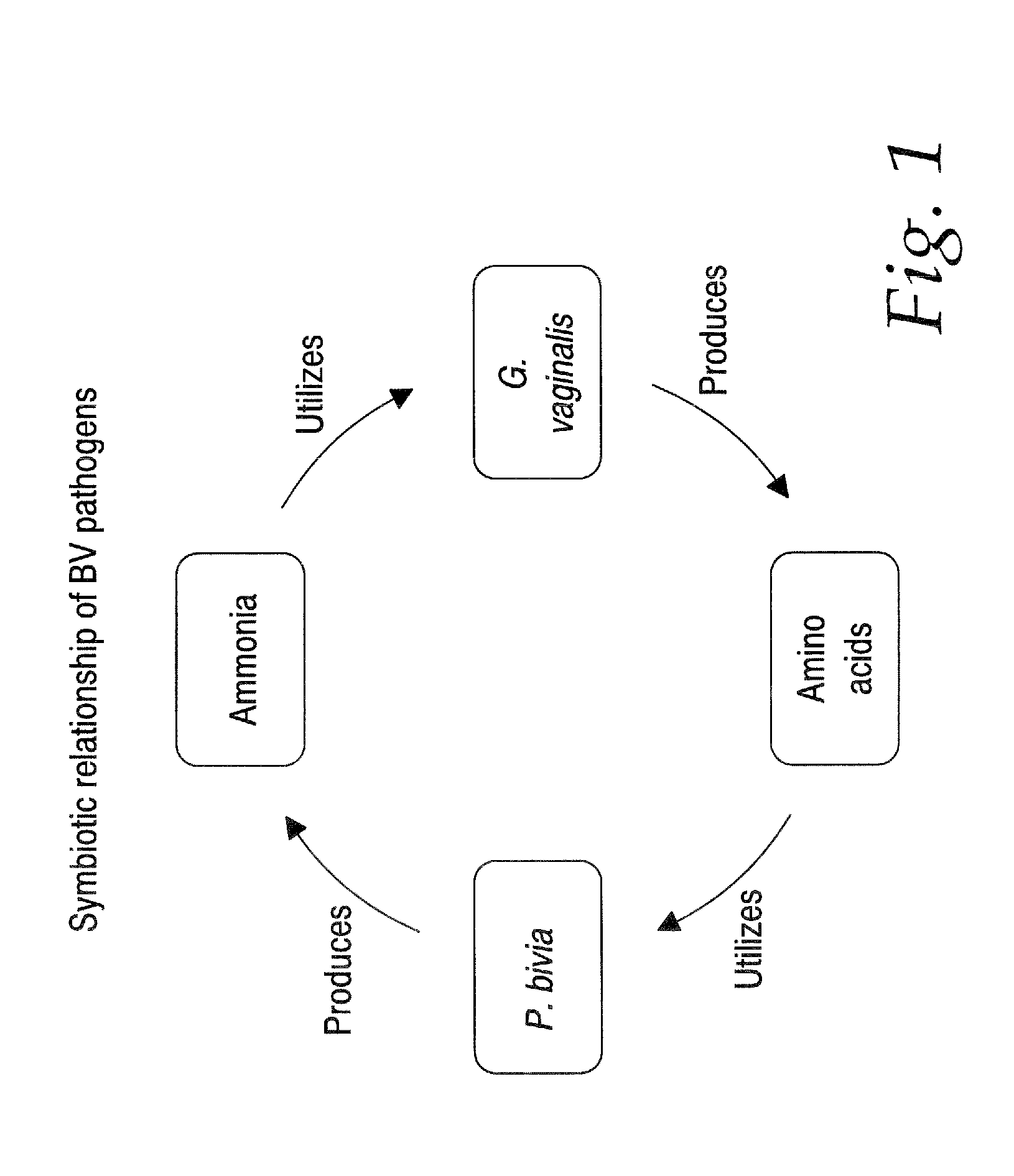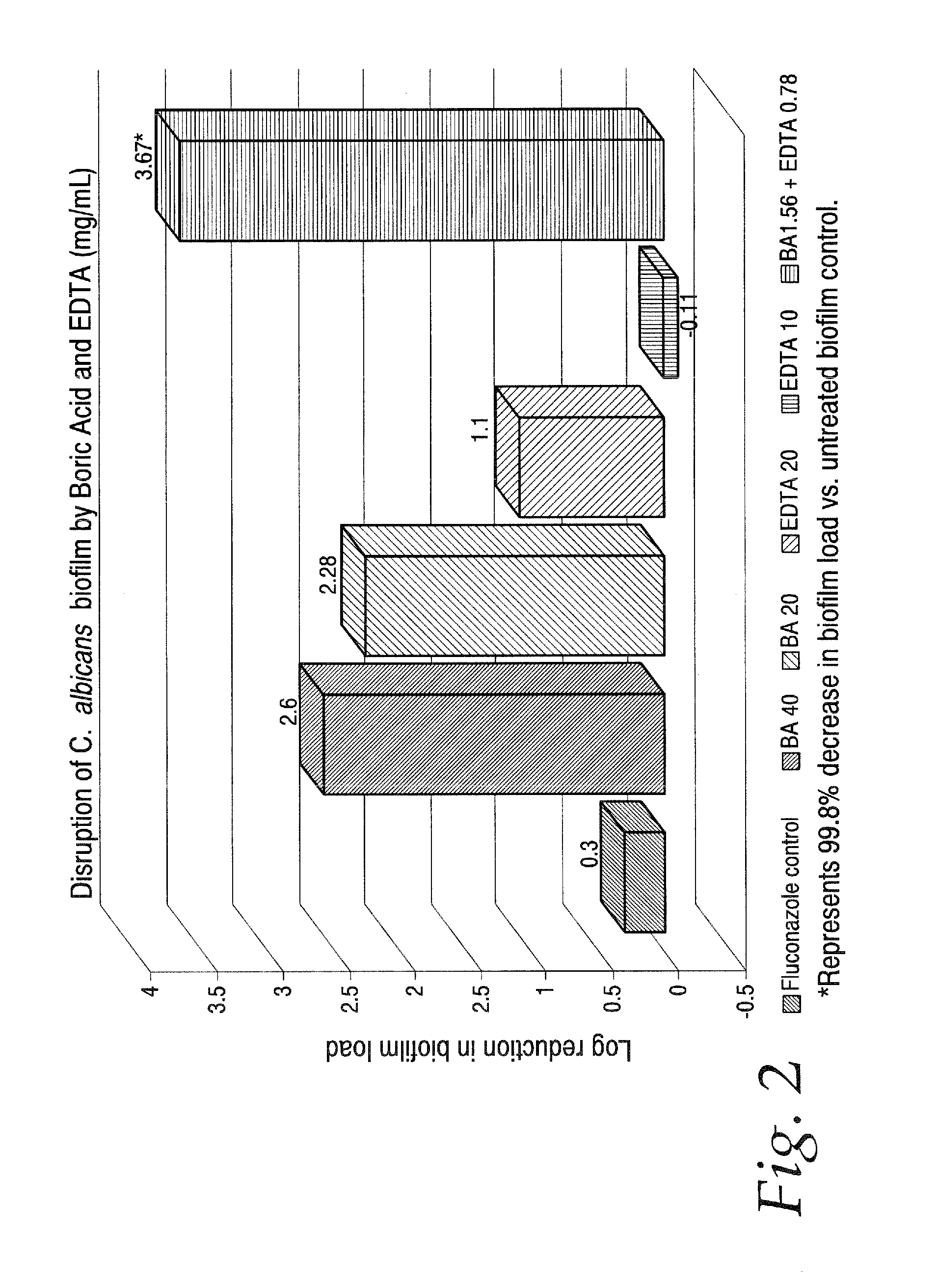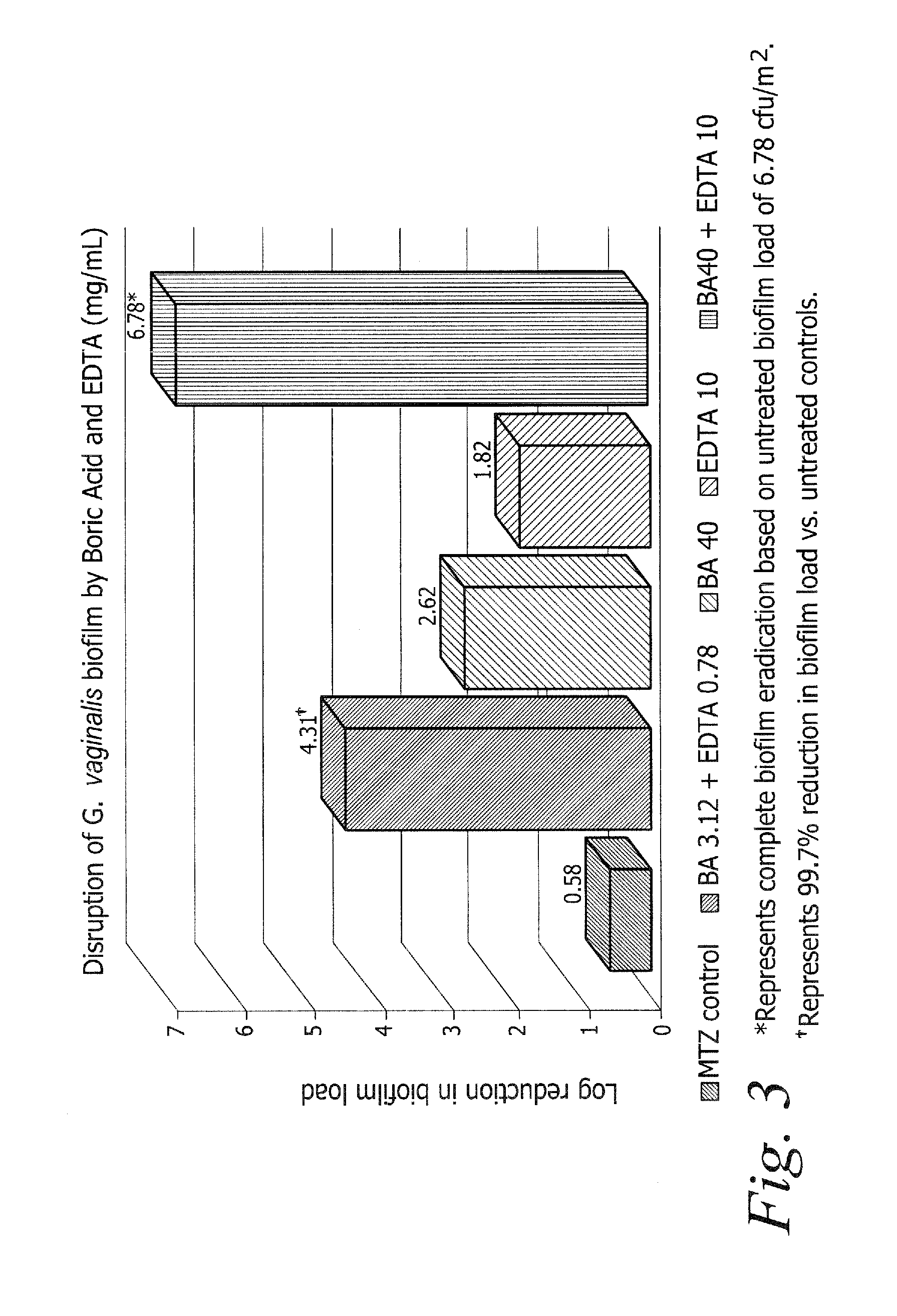Compositions and methods for treating vaginal infections and pathogenic vaginal biofilms
a vaginal biofilm and composition technology, applied in the direction of antibacterial agents, drug compositions, antiparasitic agents, etc., can solve the problems of indirect costs related to secondary complications, lack of national surveillance data on vaginal infections, and complex treatmen
- Summary
- Abstract
- Description
- Claims
- Application Information
AI Technical Summary
Problems solved by technology
Method used
Image
Examples
example 1
Disruption of C. albicans and G. vaginalis biofilms by Boric Acid and EDTA
A) Experimental Methods:
[0086]The biofilm disrupting effects of boric acid and EDTA at various test concentrations, alone and in combination, against C. albicans and G. vaginalis biofilms were studied in vitro using CDC biofilm reactors (Biosurface Technologies Corporation). The experiments were carried out at the Center for Biofilm Engineering in Bozeman, Mont. The CDC biofilm reactor method was selected based on its reproducibility and ability to provide consistent biofilm samples and growth conditions necessary for the evaluation of antimicrobial agents. As a prelude to the biofilm experiments, the planktonic (i.e., free-floating vs. biofilm-associated) MIC values for boric acid and EDTA against both test organisms were established utilizing standard MIC methodologies. In contrast to C. albicans, the planktonic MIC values for boric acid and EDTA against G. vaginalis had not previously been reported.
[0087]Th...
example 2
Treatment of Patients with highly refractory, recurrent BV by the use of Boric Acid
[0101]A retrospective case review was conducted of the use of boric acid in a series of patients with recurrent BV. Boric acid was employed as an antimicrobial agent as part of a 6-month sequential treatment protocol. To qualify for protocol treatment, all of the women had previously failed an induction and long-term maintenance regimen of metronidazole vaginal gel and thus had highly resistant infections.
[0102]With the exception of boric acid, all of the other antimicrobials used were FDA approved for BV. The 6-month protocol was as follows:[0103]1. Induction: oral metronidazole or tinidazole twice daily for 7-10 days[0104]2. Boric acid treatment: 600-mg gelatin capsule inserted vaginally daily for 21 days[0105]3. Maintenance: metronidazole vaginal gel twice weekly for 5 months
[0106]Results at the end of 6 months showed that 77% (24 / 31) of patients were clinically cured—i.e., asymptomatic and negativ...
PUM
| Property | Measurement | Unit |
|---|---|---|
| concentration | aaaaa | aaaaa |
| concentration | aaaaa | aaaaa |
| concentration | aaaaa | aaaaa |
Abstract
Description
Claims
Application Information
 Login to View More
Login to View More - R&D
- Intellectual Property
- Life Sciences
- Materials
- Tech Scout
- Unparalleled Data Quality
- Higher Quality Content
- 60% Fewer Hallucinations
Browse by: Latest US Patents, China's latest patents, Technical Efficacy Thesaurus, Application Domain, Technology Topic, Popular Technical Reports.
© 2025 PatSnap. All rights reserved.Legal|Privacy policy|Modern Slavery Act Transparency Statement|Sitemap|About US| Contact US: help@patsnap.com



